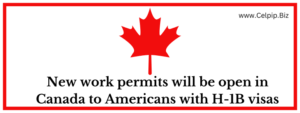Canadian immigration GCMS notes request: The time it takes to receive a response after applying is typically the most tedious component of the Canadian immigration process for many candidates. Although this phase can last for quite some time, applicants do have access to information about the progression of their case by submitting a GCMS note request.
Here is a breakdown of the steps to seek a GCMS notice for further application details.
1. Get familiar with GCMS Notes.
A GCMS note is a request made under Canada’s Access to Information and Privacy Act (ATIP), similar to the United States Freedom of Information Act.
Essential to the immigration application process are the records kept by Immigration, Refugees, and Citizenship Canada (IRCC) and noted in GCMS. IRCC’s Global Case Management System is a database where information about you and your application is kept while it is being processed. All of the information that IRCC possesses about you can be found in the GCMS notes, including but not limited to application processing notes, notes from immigration officers, visa officers’ assessments, and anything else.
Because of the ATIP definition of GCMS notes, government agencies like IRCC and the Canadian Border Services Agency (CBSA) are required by law to reply to such requests within 30 days. This time frame, however, may be extended under certain conditions.
2. Determine if you can submit a GCMS Note on your own.
It is possible to apply for a GCMS if you have already filed an application with IRCC and/or CBSA and your application has reached the R-10 completion stage (more on this below).
However, an ATIP request under the Access to Information Act is required before a GCMS note can be obtained. Two types of people can file an ATIP.
- A permanent resident or citizen of Canada
- Someone who currently resides in Canada.
Applicants from countries other than Canada can still submit a GCMS note application so long as they appoint a Canadian citizen, permanent resident, or Canadian business representative. To apply for an ATIP on the applicant’s behalf, this representative must fill out a Consent for an Access to Information and Personal Information Request form.
3. When Should You Request Your GCMS Notes?
Applicants for a GCMS note are advised to hold off until their submission has passed the so-called R-10 completeness check. Here, immigration officials check to see if the applicant has submitted all required paperwork (as detailed in the application’s “document checklist”).
After this point, applicants have the option of requesting their GCMS notes at any time throughout the waiting period; however, detailed notes that give a clearer picture of your application’s progress are typically not available until after a longer period has passed.
4. Gather the necessary data.
Make sure your request goes through without a hitch by gathering all the facts it needs before you send it in. You’ll need information like your complete name, date of birth, address, application number, Unique Client Identifier (UCI), and any other identification numbers given to you by IRCC.
5. Complete the GCMS Request
Whether you’re located in Canada or elsewhere, you can submit a request for your GCMS records in one of two ways:
- You can submit an Access to Information and Privacy (ATIP) request to IRCC yourself, or
- If you’re not in Canada, you can hire an immigration consultant or lawyer to do it for you.
Requests for GCMS notes can be made (by the principal applicant or an authorized agent) using the IRCC’s official channels, either online or by mail.
6. Make a Payment on the Processing Fee (if Any)
Whether submitted online or through the mail, the cost to submit an ATIP request (and thus a GCMS notice) is CAD 5. If you’d rather mail in your application, please be sure to include a check or money order for the appropriate amount.
7. Check for a Reply
There may be more time spent waiting once your request and associated payment have been processed. If you haven’t heard back from IRCC within 30 days, you can try sending an email or letter to the department’s ATTIP branch.
8. Evaluate and Assess Useful Information from the GCMS notes
If you have received GCMS notes, please read them thoroughly. Pay close attention to any information provided by immigration authorities, including their observations, evaluations, and decisions. You can learn a lot about the current state of your application and any prospective problems or trouble spots by reading these remarks.
9. Get Expert Help in case you are in need of it.
Seek the counsel of an immigration counselor or lawyer if you encounter anything too complicated to understand in your GCMS notes fully. They’ll be useful in making sense of the notes and figuring out what to do next. There are many Immigration Law Firms which has been helping people with their Canadian immigration needs for decades and can assist you with requesting further documentation if you need them.
Summary on Canadian immigration:
- GCMS notes reveal application insights.
- ATIP law grants access.
- Applicant or representative request.
- Request after R-10 check.
- Counselor/lawyer interpretation help.





